We often encounter situations like this:
When you first learn to write, sometimes you can write a single word well, but once you write a piece, it is very bad, and even the whole word seems to be bad. It can be seen that format is very important.
Now I will show you the correct format of hard pen calligraphy in the traditional vertical writing format. This also applies to soft pen calligraphy.
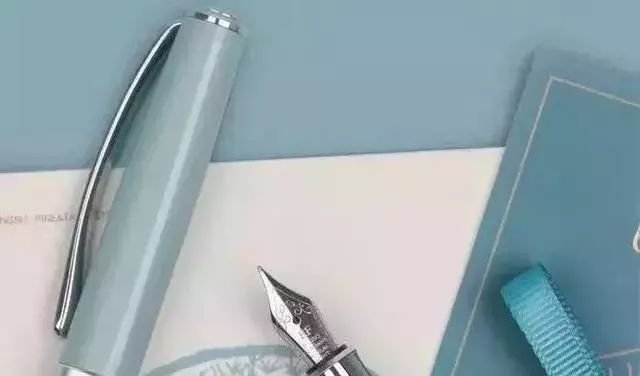
Determine content
The general requirements are: the content of hard-pen calligraphy works should be relatively complete, healthy and progressive.
You can select ready-made or self-composed suitable poems, essays, mottos, phrases, etc. according to the purpose of creation; you can also consider the length of the book content in terms of the size of the paper and the size of the text to be written.
Determine the style
Compared with brush calligraphy works, hard-pen calligraphy works are usually smaller in format, but the commonly used styles are roughly the same.
Except that it is usually impossible to write a large nave, styles commonly used in brush calligraphy such as banners, banners, fans, couplets, long scrolls, etc. can be used in the creation of hard-pen calligraphy works.
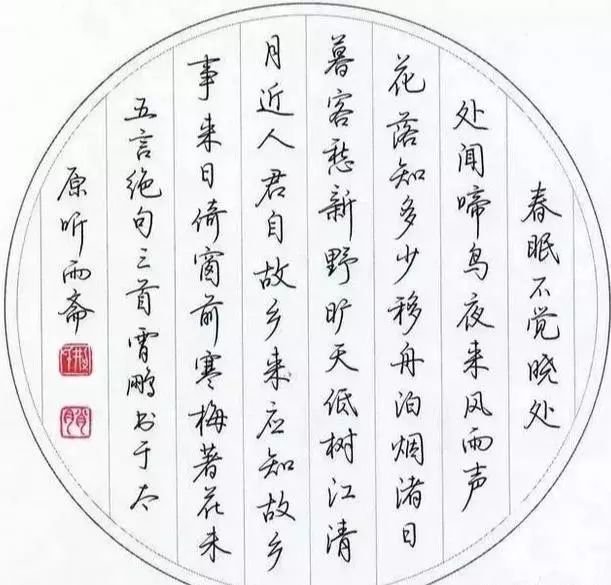
write text
The main text is the main body of the work and occupies most of the work. It needs to be arranged properly. When writing, pay attention to the following points:
(1) Pay attention to the arrangement of rules and regulations. The size of the character spacing and line spacing, the straightness of the running lines, whether the header and the sill are level, especially the font and style of the text, should be arranged appropriately.
(2) Pay attention to the correct font shape and the unity of style. You can write either standardized simplified or traditional Chinese characters, but you must not mix traditional and simplified characters, because mixing traditional and simplified characters is considered to be a sign of the creator's low cultural and artistic literacy.
(3) About punctuation marks.
It is not necessary to use punctuation marks, and the writing standards of starting and lowering, spaces and paragraphs are not used;
If the format of punctuation marks is adopted, the punctuation marks used must be correct and must not damage the integrity and beauty of the format.
Title
The title refers to other words other than the main text of the calligraphy work. It is mainly used to describe the author of the writing, the time and place of writing, etc.
shape
According to the length, it is divided into long style and poor style; according to the position, it is divided into upper style and lower style.
There is no fixed format or absolute position for the signature position. It is mutually related to the main text.
The signature content can be long or short depending on the situation, but the font size should not be very different. There must be a corresponding proportion. The size of the signature should be coordinated with the size of the main text.
The font used for the inscription follows traditional conventions, and in principle abides by the rules of "the present does not surpass the ancient" and "the movement does not keep quiet", so as to achieve "the ancient text reflects the present" and "the text is correct and vivid". But no matter what font the main text is in, it is always okay to use running script for the inscription.
The titles of calligraphy works generally do not use common names but nicknames (also called elegant names). For example: "Written in 2007" is a common name, and it should be "Written in the year of Dinghai".
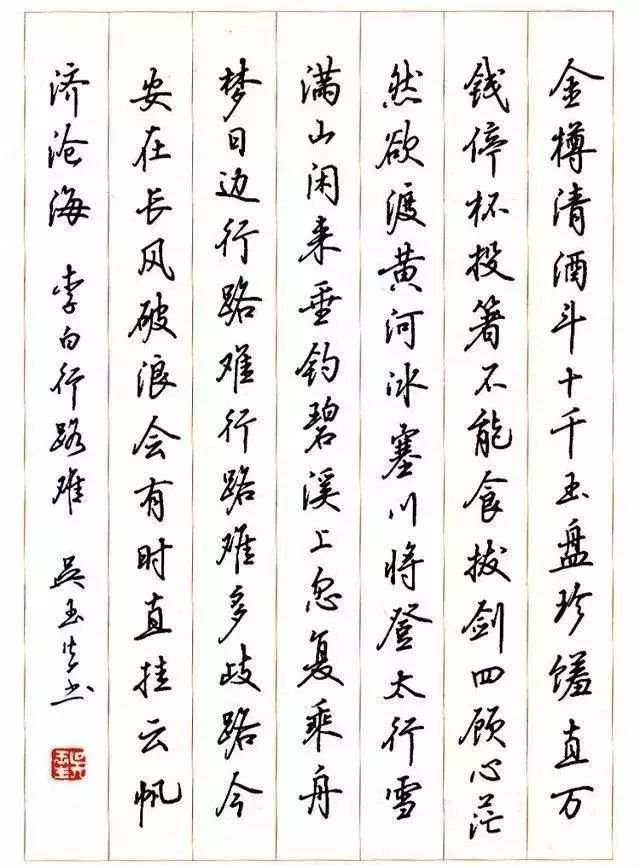
(1) Payment
The above paragraph refers to someone or a certain unit asking you to write. After the work is completed, the name of the requester should be inscribed, and this name should be inscribed in a higher position in the previous paragraph to show respect.
Contents included in the above paragraph: name + title + modest words.
(1) Write to elders
Calligraphy works written to elders are generally called Comrade ××, Mr. ××, Fang Family ××, Ms. ××, Teacher ××.
If the elder is over seventy years old, he can be called ××老; if he is over eighty years old, he can be called ××老公.
The writer is a junior, and the elders are generally not addressed by their surnames, and modest words are added, such as: zhizheng, fazheng, jiaozheng, zhengzi, zhengzhi, zhengzhi, qingshang, yasu, xizheng, zhengbi, zhengshu .
For example: Mr. Jianpeng Qingshang, Huabin Fangjiazhengzhi.
(2) Write to peers
Works written by peers are generally called XX comrade, XX book friend, XX dear friend, XX classmate, XX eldest brother, XX wise brother, XX little sister, XX academic friend, etc.
It should be noted here that common names are not suitable for inscriptions, such as: XX eldest sister, XX second brother, etc. You can also add modest words after the title, such as: cun nian, hui cun, liu mian, liu cun, qing reward, order book, life book and so on. Such as: Erfu Shuyou Huicun, Jianping Xiandi Yasushi.
(3) Write to the juniors
In calligraphy for the younger generation, the first paragraph can be titled ×× student, ×× wise wife, ×× wise nephew, ×× beloved grandson, ×× beloved daughter, etc. Such as: Lizhen’s niece will remember it.
(4) Source of text
The text of the work includes poems, sentences, aphorisms, aphorisms, etc. The author or title of the text should be written as follows in the title: Preface to Wang Bo Teng's Royal Pavilion, Wang Wei's Poems in the Mountains.
For some well-known poems and famous sentences, such as: "Reading thousands of volumes, writing like a god", you can omit the source title of the text.
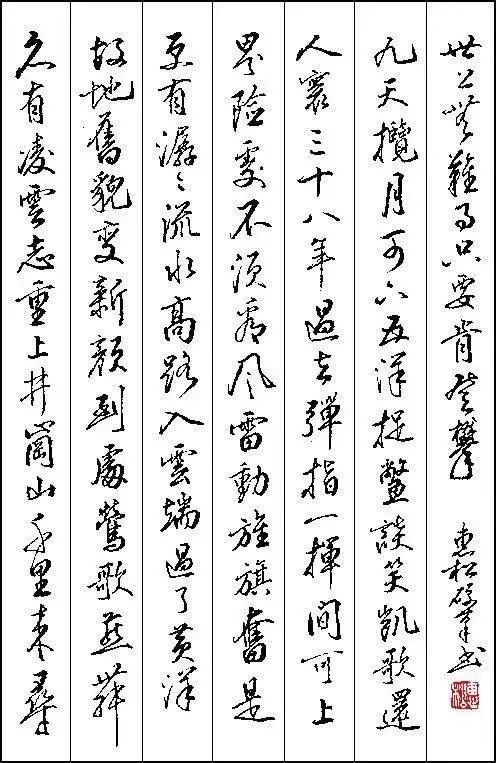
(2) Subscription
(Hao Zi) + Qian Ci
(1) Time
①Another name for year
The nickname of the year is based on the ten heavenly stems (A, Yi, Bing, Ding, Wu, Ji, Geng, Xin, Ren, Gui) and the twelve earthly branches (Zi, Chou, Yin, Mao, Chen, Si, Wu, Wei). , Shen, You, Xu, Hai) in order, that is, "Jiazi year, Yichou year, Bingyin year..."
It takes 60 years for a "Jiazi year" to arrive. For example, 2007 is the year of Dinghai, 2008 is the year of Wuzi, 2009 is the year of Jichou, and so on.
② Another name for season
Spring: early spring, early spring, Yangchun, Fangchun, late spring
Summer: early summer, mid-summer, late summer, ninth summer, midsummer
Autumn: early autumn, golden autumn, third autumn, late autumn, mid-autumn
③Another name for the lunar month
January: Meng Chun, first month, early spring, Kai Sui, Fang Sui
February: mid-spring, apricot moon, beautiful moon, flower dynasty, mid-spring
March: Season of Spring, Late Spring, Peach Moon, Silkworm Moon, Peach Waves
April: Mengxia, Huaiyue, Maiyue, Maiqiu, Qingyue:
May: midsummer, durian month, May month, midsummer, Qinghe month
June: Jixia, late summer, lotus month, summer month, summer heat
July: Mengqiu, Guayue, Liangyue, Lanyue, Lanqiu
August: Mid-Autumn, Guiyue, Zhengqiu, Shuangyue, Guiqiu
September: Ji Qiu, late autumn, chrysanthemum moon, chanting the moon, chrysanthemum autumn
October: Mengdong, early winter, good month, beginning of winter, auspicious month
November: Midwinter, Clear Moon, Midwinter, Snow Moon, Cold Moon
December: Jidong, late winter, twelfth lunar month, ice moon, twilight moon
From the first day to the tenth day of each month, it is called Shanghuan.
From the 11th to the 20th of every month, it is called Zhonghuan.
It is called Xiahuan every 20 to 30 years.
For example: In the year of Jiazi, the laurel moon rises.
Note: When answering time questions, it is easy to mix the lunar calendar and the Gregorian calendar. For example, June of 2007 cannot be written as Lotus month of Dinghai year, because June of the Gregorian calendar is May of the lunar calendar.
(2) Location
When writing the inscription, if the place is written, use an elegant name instead of a common name. For example: Written at Hailing Meat Shop in Taizhou, this type of place is a common name. However, it is acceptable to write it in the early spring hall and write it in the Hongbin Tower.
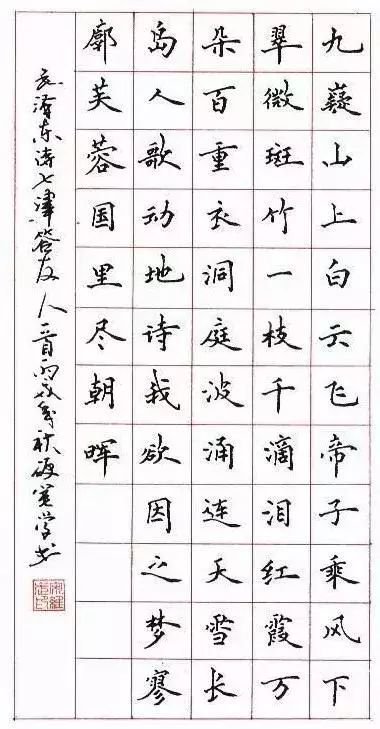
Seal
Seals are one of the indispensable components of hard-pen calligraphy works. Small seals can be the finishing touch in hard-pen calligraphy works, but if used improperly, they will destroy the charm of the entire work.
Classification of seals used in hard-pen works:
1. According to the carving method, it can be divided into two types: Yin script (Bai script) and Yang script (Zhu script);
2. According to the engraved content, it can be divided into two categories:
One is the famous seal, which is the seal with the name, calligraphy and nickname of the writer, usually small round or small square; the other is the casual seal, including the year seal, Yaqu seal, Zhaiguan seal, etc., most of which are oval, Small rectangle.
The following points should be noted when sealing:
(1) The seal should be neither slanted nor tilted, and should be able to stabilize the center of gravity of the text. Before sealing, you should carefully examine the work to determine the best location for the seal. When sealing, if you are not sure, you can use the seal rule.
(2) The size of the seal should be coordinated with the size of the inscription and main text. Generally, it should be about the same size as the character, and should not be too large. Too big looks clumsy, too small looks stingy and not filling enough. A special seal for hard-pen calligraphy should be prepared and cannot be replaced by a large seal for brush calligraphy.
(3) In a work, there should not be too many seals, no more than three. Using too many seals will distract the viewer's attention.
(4) In traditional vertical calligraphy works, the name seal should be stamped below or to the left of the writer's signature. It should not be stamped between the inscription and the main text, nor should it be stamped at the same level as the main text, in order to ensure the accuracy of the calligraphy. The beauty of variation.
(5) If the surname and the given name are separated into two seals, the surname is generally in the front and the given name is in the back. It is appropriate to have one round and one square or one red and one white. The distance from the last character of the title should be appropriate, and the distance between the two seals should be appropriate. There must be no spacing.
(6) Leisure seals such as year number seals, Yaqu seals, and Zhaiguan seals are mostly made into oval or rectangular shapes as introductory seals, covering the empty space between the first and second characters at the beginning of the text. If it is made into a square seal, it can also be stamped behind the name seal.
Calligraphy practice questions are published by 15 Calligraphy Practice Network. Please indicate when reprinting:https://www.seowhy15.com/a/467.html








